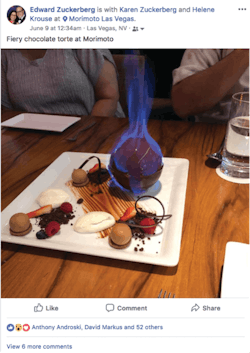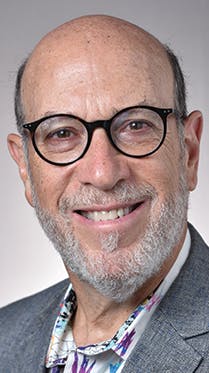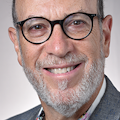The best content to build a trustworthy and engaging Facebook Page for your dental office
Four years after Facebook debuted in 2004, Business Pages were rolled out in addition to existing personal profiles. In 2010, when I first started writing and speaking on the topic, the big question was whether or not a dental office needed a Facebook Page. Currently, virtually every dental practice has a Facebook Page, and many have pages on other social networks as well. The questions now are how to best encourage engagement and grow the number of users, with the ultimate goals of attracting new patients, getting existing patients to use basic dental services more frequently, and obtaining more comprehensive treatments.
To reach these goals, it is paramount that the content on social media paints the image of the dental office as trustworthy, valuable, and believable. Many dentists don’t see the value of having an in-house, dedicated marketing professional for their practice. They either delegate the task of content creation to a third-party agency or to one or more staff members who often don’t follow through with regularity or post content that meets the goals mentioned above.
Third-party agency content is typically canned and might appear simultaneously in other dental offices’ promotions throughout the country, without creating a connection to your own office among your fans. This type of content is rarely personalized and does little more than get some News Feed penetration to your fans, keeping your name in front of them periodically.
For the purpose of this article, I will refer to two main types of content: brand-generated content (BGC) and user-generated content (UGC). A third type, which is a hybrid of the two, will also be discussed.
BGC refers to just about any content posted by the dental office on its office page. It can be an image, video, link to an article, link to the office’s website, or text produced by a staff member. BGC can also be created by a third-party agency and posted in the name of the practice to appear that it was created in-house.
UGC refers to content typically created by an existing patient of the practice and can be shared either to the practice’s page or on the user’s personal profile. These will usually be in the form of a check-in, a review, or a recommendation of the practice.
These become a recommendation of the business that gets posted on the individual’s personal profile, allowing a marketing reach that the company would otherwise not get. Organically (the term used for content posted by a page that is not boosted), a post will reach between 5% and 10% of the page’s fans, depending on how much engagement the post gets. The reach ends there unless the content is so interesting that fans share it to their own profiles, an unusual occurrence.
Business owners can pay to boost their content and choose to target friends of the fans of their page, which is a great tool to reach potential word-of-mouth referrals. The audience reached by this method will also see the name of their friend who is a fan of the page. This is a passive word-of-mouth referral, but credibility is achieved through the implied recommendation of the business’s services from their trusted friend.
Still, the content is BGC, and as such there is a better and arguably less expensive way to do this. If you consider that the typical dental office has about 500 fans on Facebook and the average user has 350 friends in their network, the typical office has a potential reach of 175,000 word-of-mouth referrals by tapping into the networks of their fans. The challenge, then, is to encourage our patients to check in at our offices. This is not a simple task, but the goal can be successful with some creativity and incentivization.
Many offices already give away lots of free swag in the form of engraved toothbrushes, water bottles, shopping bags, toothpaste wringers, pens, etc. Additionally, I have seen giveaways that include stickers, movie passes, toothpaste, hourglass timers, key chains, letter openers, hats . . . you name it!
The stuff practices are giving out with the hope of spreading their name around is incredible, and yet they get nothing in return other than a small amount of goodwill. Why not package it all into a reusable shopping bag and offer it in exchange for a check-in? Now, each bag given away (total estimated cost under $25) results in up to 350 people finding out that their trusted friend thinks enough of your dental practice to tell all of their friends that they were at your office. Their friends won’t know you incentivized them for the check-in; they will simply perceive their friend as shouting: “My dentist is great, and you should be going to him/her.”
In no time, 42 of those cases were grabbed up by folks more than willing to check in at our office and show proof to our receptionist of their check-in on their phones. We were on our way to handling phone calls and emails from several new patients obtained via this promotion. In one case, a woman who had accompanied her friend to the office to drive her home after a surgical procedure inquired if she was eligible to get a case of toothpaste even though she was not a patient. Of course, we gave it to her in exchange for a check-in, and we were potentially able to get 350 new referrals from someone who was not even a patient in our practice!
User-posted reviews are another source of UGC that are perceived as highly authentic. The best ones come when your happy patient posts a review on his/her own profile page, thus sharing it directly with 350 friends. If you can identify the patients in your practice who are more tech-savvy, know that they probably have more than 1,000 friends in their networks, so a review from them carries even more bang. Only a few people are likely to review directly on theirOthers will engage with threads on your page posting recommendations, five-star reviews on Google, Healthgrades, Yelp, etc., all of which you can ultimately share on your practice’s Facebook Page. I consider this to be hybrid UGC-BGC content, since the post will appear only on the office page. However, the content originates from a satisfied customer, so it carries with it the authenticity of UGC; it just doesn’t have the organic penetration to the customer’s network. This is where establishing a budget for boosting content to the friends of fans of your page comes in.
In summary, one change you can make to increase engagement and perceived authenticity of the content on your Facebook Page or other social media is to use UGC effectively. Do this and you will see your new-patient numbers and case acceptance rates grow through efficient use of your existing and highly satisfied customers.
References
- Stackla survey reveals disconnect between the content consumers want and what marketers deliver. News release. Business Wire. February 20, 2019. https://www.businesswire.com/news/home/20190220005302/en/Stackla-Survey-Reveals-Disconnect-Between-the-Content-Consumers-Want-What-Marketers-Deliver
- Bridging the Gap: Consumer & marketing perspectives on content in the digital age. Stackla. https://stackla.com/resources/reports/bridging-the-gap-consumer-marketing-perspectives-on-content-in-the-digital-age/
About the Author
Edward J. Zuckerberg, DDS, FAGD
Edward J. Zuckerberg, DDS, FAGD, a 1978 graduate of New York University College of Dentistry and an early adopter of technology, practiced in New York until 2013. He lectures on technology integration, social media marketing, and online reputation management for dentists; consults privately with dental practices; advises dental/medical technology start-ups; and treats patients part-time in Palo Alto, California. Contact Dr. Zuckerberg at painlessdrz.com or on his Facebook Page, facebook.com/painlesssocialmedia.






